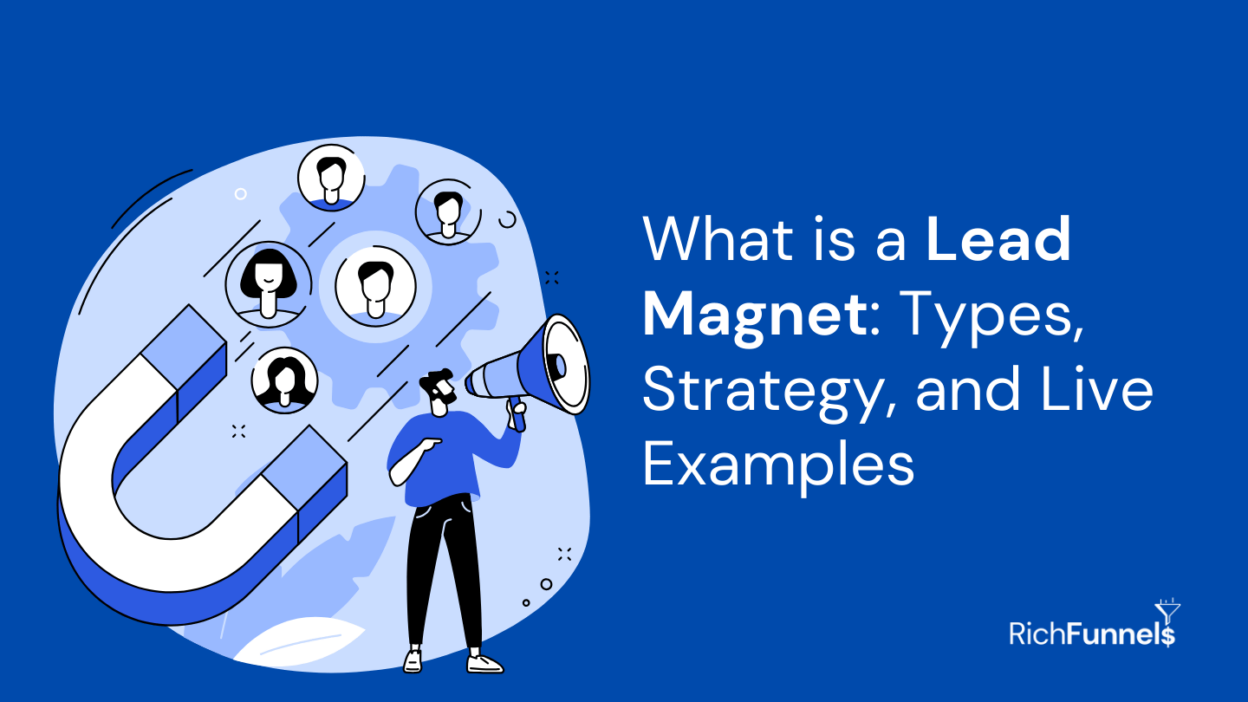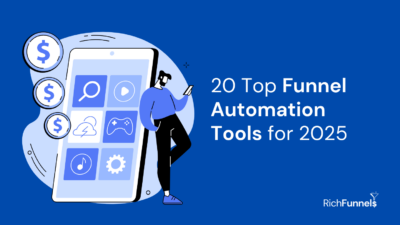Every successful business faces a common challenge: converting website visitors into valuable leads. However, only 2.35% of website visitors typically complete a contact form or make a purchase on their first visit. Lead magnets solve this conversion challenge by offering valuable content in exchange for contact information. For example, businesses using well-designed lead magnets report conversion rates as high as 25-40%. Above all, the right lead magnet strategy helps build email lists, qualify prospects, and establish authority in your industry.
In this article, I’ll explain lead magnets, their various types, and proven strategies for creating them effectively. You’ll learn how to develop, implement, and optimize lead magnets that consistently attract qualified prospects to your business.
What is a Lead Magnet🧲?
A lead magnet is a marketing tool or incentive offered to potential customers in exchange for their contact information, such as their email address or phone number. The primary goal of a lead magnet is to attract and capture leads—people who are interested in your product or service—so you can nurture them into paying customers.
Lead magnets are typically free and designed to provide value to the audience, addressing a specific need, challenge, or interest. They often take the form of:
- E-books or whitepapers.
- Checklists or templates.
- Free trials or samples.
- Discounts or special offers.
- Webinars or workshops.
- Case studies or reports.
The key to an effective lead magnet is offering something relevant, valuable, and compelling enough that the audience willingly provides their contact information in return. This is a foundational element of email marketing and digital marketing strategies.
Understanding Lead Magnet Strategy
Initially, understanding the psychology behind lead magnets reveals why they’re so effective at converting visitors into leads. Research shows that cheat sheets achieve a 34% conversion rate, while checklists and ebooks follow closely at 27% and 24% respectively.
The Psychology Behind Effective Lead Magnets
The success of lead magnets stems from two fundamental psychological principles. First, the principle of reciprocity drives people to respond when they receive something valuable. Furthermore, the scarcity principle makes exclusive offers more appealing, encouraging quick action from potential leads.
Key Components of High-Converting Lead Magnets
A high-converting lead magnet must incorporate these essential elements:
- Problem-Solving Focus: Address specific challenges your audience faces
- Quick Wins: Deliver immediate, actionable value
- Accessibility: Ensure instant access to the content
- Expertise Demonstration: Showcase your authority in the field
- High Perceived Value: Offer content worth trading contact information for
Mapping Lead Magnets to Customer Journey Stages
Specifically, different lead magnets work better at various stages of the customer journey:
| Journey Stage | Recommended Lead Magnet Types | Purpose |
|---|---|---|
| Awareness | Checklists, Quick Guides | Create initial engagement |
| Consideration | Whitepapers, Webinars | Demonstrate expertise |
| Decision | Free Trials, Consultations | Drive conversion |
In essence, the effectiveness of your lead magnet strategy depends on aligning content with your audience’s current journey stage. For early-stage users, lightweight resources like informal quizzes and checklists prove most effective. Consequently, mid-stage users respond better to detailed content such as white papers and comprehensive guides. Meanwhile, late-stage users prefer high-value assets like product demos and personalized recommendations
Creating Your Lead Magnet Framework
Building an effective lead magnet starts with a structured framework. A recent study shows that lead magnets solving specific problems achieve conversion rates up to 85% higher than generic offerings.
Conducting Audience Research and Need Analysis
The foundation of a successful lead magnet lies in understanding your target audience. Start by examining your inbox, social media interactions, and forum discussions to identify recurring questions and pain points. Additionally, analyze your website traffic patterns to determine which topics generate the most engagement.
Consider these key research areas:
- Current customer challenges
- Information gaps in your industry
- Preferred content consumption formats
- Barriers preventing problem resolution
Choosing the Right Lead Magnet Format
Selecting the appropriate format depends on your audience’s preferences and the complexity of the solution you’re offering. Here’s a comparison of popular formats and their effectiveness:
| Format | Best For | Conversion Rate |
|---|---|---|
| Cheat Sheets | Quick solutions | 34% |
| Templates | Practical application | 27% |
| Mini-courses | Detailed learning | 24% |
Developing Your Value Proposition
Your value proposition must clearly communicate the immediate benefit to your audience. Research indicates that lead magnets promising quick wins and instant accessibility see significantly higher conversion rates 6. Therefore, focus on creating content that delivers:
- Immediate results
- Simple implementation steps
- Unique insights
- Professional presentation
Particularly important is the naming of your lead magnet. Consider these proven approaches:
- “How to…” format for instructional content
- “The Complete Guide” for comprehensive resources
- Question-based titles to spark curiosity
- Experience-based “How I…” format
Remember to test different elements of your landing page, notably the headline, image, and copy, as these components directly impact conversion rates.
Implementation and Technical Setup
Landing pages serve as the cornerstone of successful lead magnet implementation. Data shows that the average lead magnet landing page achieves an 18% conversion rate 7, making it a crucial element in your lead generation strategy.
Building Effective Landing Pages
A well-designed landing page focuses solely on collecting visitor information. Accordingly, your landing page should include these essential elements:
- Clear, compelling headline
- Concise value proposition
- Minimal form fields
- Strong call-to-action button
- Trust indicators (security badges, testimonials)
Setting Up Delivery Systems
Once visitors submit their information, delivering your lead magnet promptly becomes paramount. Research indicates that immediate delivery significantly impacts engagement rates. Consider these proven delivery methods:
- Thank You Page Download: Direct access post-form submission
- Automated Email Delivery: Instant welcome email with download link
- Members-Only Portal: Exclusive access area for multiple resources
- SMS Delivery: Mobile-friendly download links
Integrating with Your CRM
Certainly, a robust CRM integration enhances your lead magnet effectiveness. Subsequently, this integration enables:
| Feature | Benefit |
|---|---|
| Automated Lead Capture | Instant database updates |
| Segmentation | Targeted follow-up campaigns |
| Performance Tracking | ROI measurement |
| Task Assignment | Automated sales team notifications |
Moreover, modern CRM systems allow for automated task creation and lead scoring, ensuring prompt follow-up with qualified leads. During the setup process, ensure your landing page builder connects seamlessly with your email service provider and CRM platform.
Evidently, the technical implementation requires attention to detail. Otherwise, you risk losing valuable leads due to delivery failures or tracking issues. Likewise, testing your entire setup before launch helps identify and resolve potential bottlenecks in your lead generation funnel.
To optimize your delivery system, consider implementing a double opt-in process, which not only ensures compliance but also helps maintain a high-quality email list. Additionally, setting up analytics tracking enables you to monitor key metrics and refine your approach based on actual performance data.
Measuring Lead Magnet Performance
Tracking the right metrics determines whether your lead magnet strategy succeeds or fails. Recent data shows that traditional PDF lead magnets convert at 3-10%, although interactive formats like quizzes can achieve 30-50% conversion rates.
Essential Metrics to Track
First thing to remember, successful lead magnet measurement focuses on both quantity and quality. Here are the critical metrics that matter:
| Metric Type | What to Measure | Why It Matters |
|---|---|---|
| Conversion Rate | Downloads/Visitors | Shows offer appeal |
| Lead Quality | BANT scoring | Indicates prospect value |
| Source Attribution | Traffic origins | Reveals best channels |
| Engagement | Content interaction | Measures relevance |
In fact, tracking these metrics helps identify gaps in your lead magnet flow and optimize your conversion funnel.
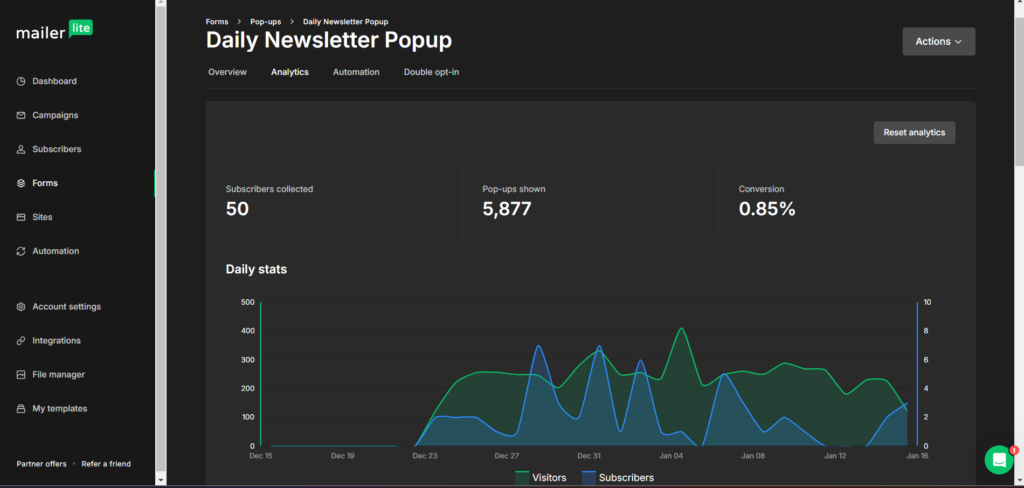
Setting Up Analytics and Tracking
Important to realize, proper analytics setup ensures accurate measurement of your lead magnet performance. Consider implementing these tracking elements:
- Unique tracking links for different traffic sources
- Event tracking for downloads and form submissions
- Integration between email platforms and CRM
- Lead scoring system implementation
- Automated tagging for subscriber segmentation
Coupled with your CRM, these tracking mechanisms help match subscribers to actual sales data. In contrast to basic analytics, this approach provides insights into which lead magnets generate not just leads, but paying customers.
Calculating ROI on Lead Magnets
The ultimate measure of success lies in your return on investment. Research indicates that 14% of businesses achieve a 5:1 ROI from their lead generation efforts. To calculate your lead magnet ROI, use this formula:
ROI = ((Amount Gained – Amount Spent) / Amount Spent) x 100
Nevertheless, consider these factors when calculating ROI:
- Customer Acquisition Cost (CAC)
- Customer Lifetime Value (CLV)
- Lead-to-Customer Conversion Rate
- Marketing and Production Costs
Although measuring immediate downloads provides quick feedback, tracking long-term customer value offers deeper insights. Data shows that leads followed up within 24 hours are 60% more likely to convert into sales, emphasizing the importance of prompt follow-up systems in your ROI calculations.
Optimization and Testing Strategies
Systematic testing and optimization form the backbone of successful lead magnet strategies. Recent data shows that businesses implementing regular A/B testing see conversion rates improve by up to 300% 12.
A/B Testing Framework for Lead Magnets
A structured A/B testing approach helps identify what resonates with your audience. Indeed, the ICE framework (Impact, Confidence, Ease) provides a reliable method for prioritizing tests. Consider these key testing elements:
| Element | What to Test | Impact Level |
|---|---|---|
| Headlines | Value proposition | High |
| Visuals | Images vs. Screenshots | Medium |
| CTAs | Button text and design | High |
| Form Fields | Length and layout | Critical |
Undoubtedly, the most effective testing strategy focuses on one variable at a time to accurately measure impact.
Improving Conversion Rates
Rather than making assumptions, data-driven optimization leads to better results. Here are proven strategies for boosting conversion rates:
- Landing Page Optimization
- Create attention-grabbing headlines focusing on problem-solving
- Include tangible lead magnet previews or screenshots
- Keep form fields minimal – email and name only
- Delivery Enhancement
- Implement pop-ups and alert bars strategically
- Place CTAs within relevant blog posts
- Utilize exit-intent triggers for hesitant visitors
In similar fashion to product development, lead magnet optimization requires continuous refinement. Data indicates that squeeze pages with videos and images perform significantly better than plain text versions.
Scaling Successful Lead Magnets
At this point, once you’ve identified winning lead magnets through testing, scaling becomes crucial. Consider these proven scaling strategies:
- Diversify Traffic Sources
- Implement strategic pop-ups across high-traffic pages
- Leverage social media advertising for targeted reach
- Integrate CTAs within existing content
In the light of successful implementation, focus on maintaining quality while expanding reach. Research shows that lead magnets solving specific problems achieve 85% higher conversion rates compared to generic offerings.
Analogous to other marketing efforts, scaling requires careful attention to:
- Quality Control
- Monitor engagement metrics
- Maintain value proposition
- Update content regularly
- Channel Expansion
- Test new traffic sources
- Optimize ad campaigns
- Leverage partnerships
The key to successful scaling lies in maintaining the core value while expanding reach. Data shows that properly optimized lead magnets can achieve conversion rates between 30-50% for interactive formats.
How Lead Magnet is Important in the Marketing Funnel?
A lead magnet plays a pivotal role in the marketing funnel because it acts as the bridge between attracting potential customers and converting them into engaged leads. Here’s how it fits into the different stages of the marketing funnel:
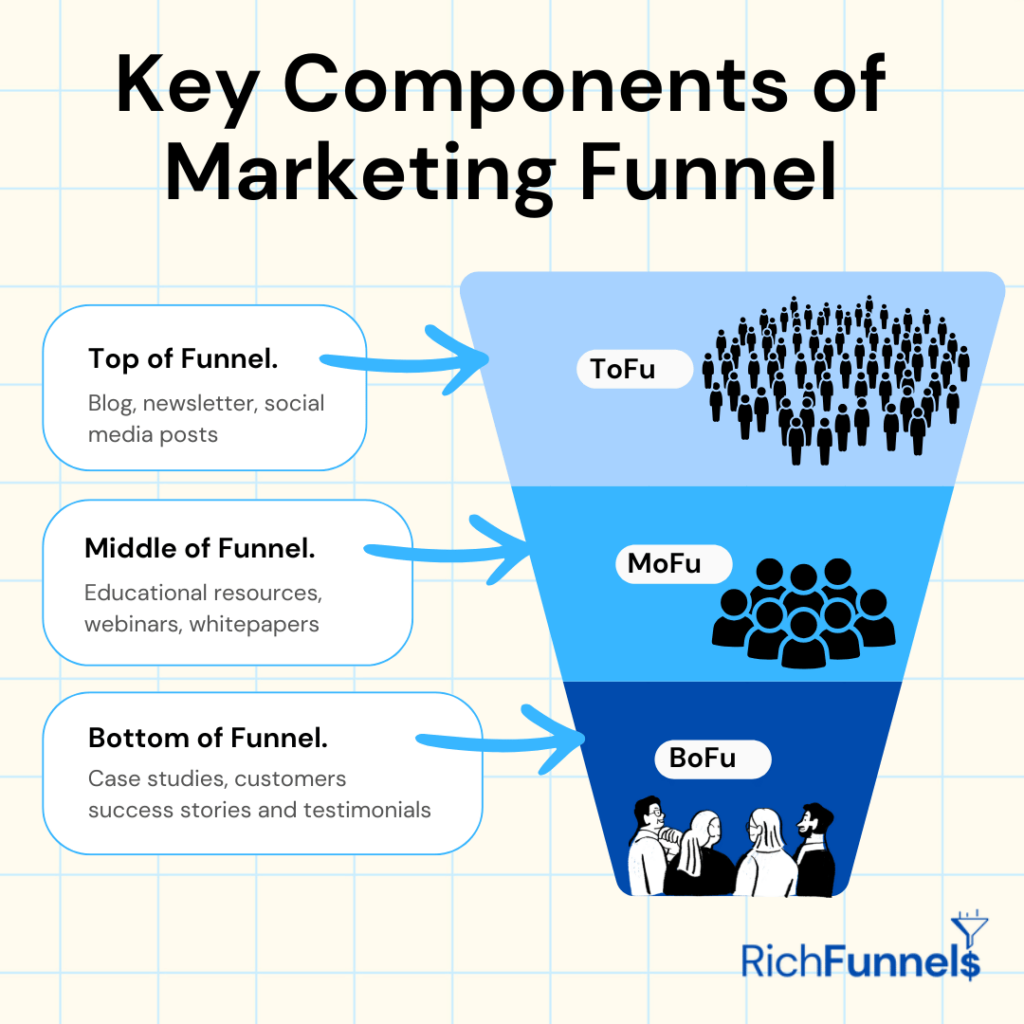
1. Top of the Funnel (Awareness Stage):
- At this stage, people are just becoming aware of your brand or offerings.
- A lead magnet attracts attention by offering something valuable and relevant to the audience’s needs or interests.
- It helps establish your credibility and builds initial trust with potential customers.
2. Middle of the Funnel (Consideration Stage):
- By capturing contact information (like email addresses) through a lead magnet, you can nurture leads through personalized communication.
- Sending targeted content, tips, or solutions keeps prospects engaged and moves them closer to making a decision.
3. Bottom of the Funnel (Decision Stage):
- A well-structured lead magnet can guide qualified leads to the final stages of their buying journey.
- It ensures that leads who engage with your content are more informed, warmed up, and ready to make a purchase decision.
Importance of Lead Magnets in the Funnel:
- Generates Leads: Provides an incentive for people to share their contact details.
- Builds Trust: Offers valuable resources that establish your authority and reliability.
- Nurtures Relationships: Keeps potential customers engaged and educated about your products or services.
- Increases Conversion Rates: By targeting the right audience with the right lead magnet, you are more likely to convert them into paying customers.
Lead magnets ensure that your marketing funnel remains full of engaged, high-quality leads that are more likely to progress through the funnel.
Live Examples
Here are some live examples of effective lead magnets across various industries:
1. Free Ebooks and Trends Report

- Example: HubSpot offers ebooks on topics like inbound marketing, email marketing, and sales strategies.
- Landing Page: HubSpot Resources
- Purpose: Provides in-depth knowledge while capturing email leads.
2. Lifetime Free Calander
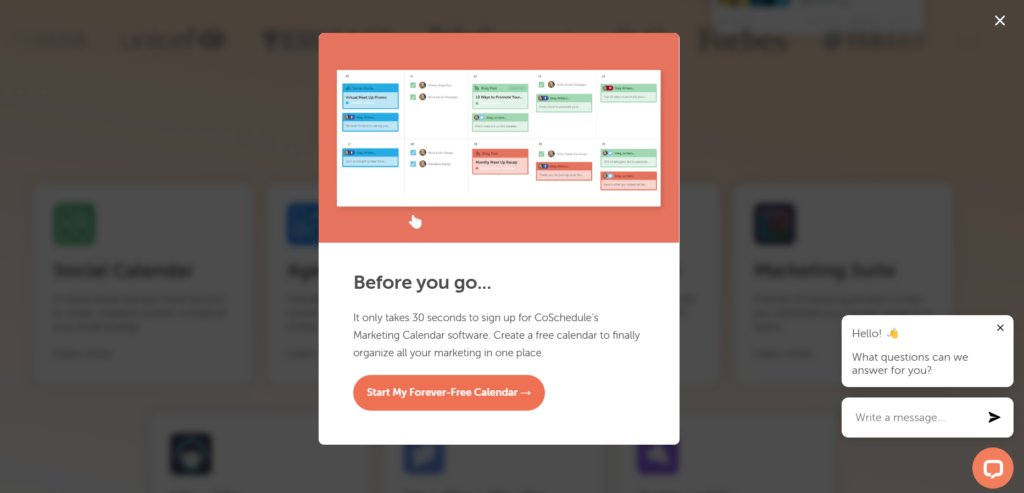
- Example: CoSchedule provides a free calendar with lifetime access.
- Landing Page: CoSchedule Checklist
- Purpose: Simple, actionable resources that solve specific problems.
3. Templates
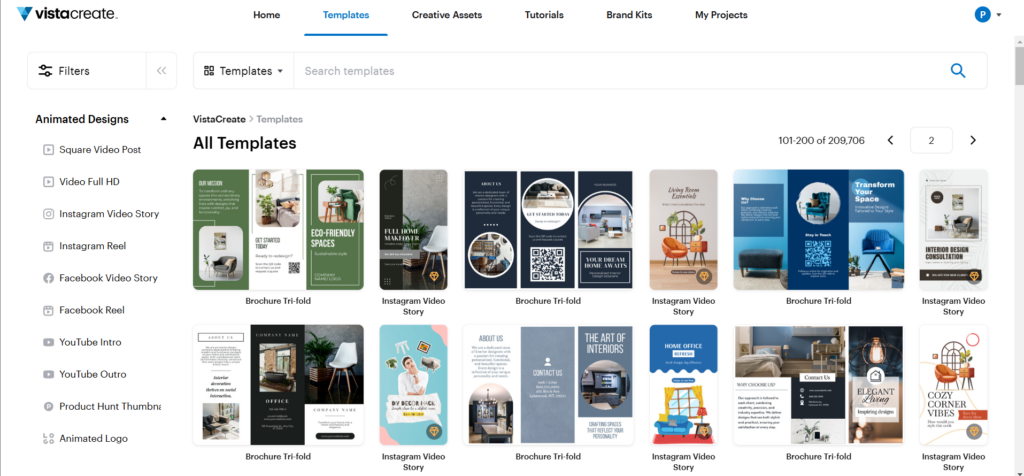
- Example: Vista offers free design templates for presentations, social media, and more.
- Landing Page: Vista Templates
- Purpose: Attracts users to the platform by solving design needs.
4. Free Courses or Tutorials

- Example: Coursera provides free introductory courses on various topics.
- Landing Page: Coursera Free Courses
- Purpose: Builds trust and showcases the quality of their paid courses.
5. Free Trials
- Example: Shopify offers a 14-day free trial of their e-commerce platform.
- Landing Page: Shopify Free Trial
- Purpose: Lets users experience the product before committing.
6. Quizzes and Assessments
- Example: BuzzFeed uses quizzes as engaging content that collects user data.
- Landing Page: BuzzFeed Quizzes
- Purpose: Captures emails by offering personalized results.
7. Webinars
- Example: Neil Patel offers free webinars on SEO and digital marketing strategies.
- Landing Page: Neil Patel Webinars
- Purpose: Educates audiences and nurtures potential clients.
8. Free Tools
- Example: Ubersuggest offers free keyword research and SEO analysis.
- Landing Page: Ubersuggest
- Purpose: Provides immediate value while capturing leads.
9. Case Studies
- Example: Drift shares case studies about how businesses improved conversions using their tools.
- Landing Page: Drift Case Studies
- Purpose: Builds credibility and showcases product effectiveness.
10. Resource Libraries
- Example: Freesources.io provides a collection of free digital tools, templates, and resources.
- Landing Page: Freesources.io
- Purpose: Offers immense value by aggregating resources and capturing leads.
11. Discounts or Coupons
- Example: Retailers like Amazon and Sephora offer discounts in exchange for email signups.
- Landing Page: Sephora Beauty Insider
- Purpose: Encourages purchases and builds a loyal customer base.
Conclusion
Lead magnets stand as powerful tools for transforming casual website visitors into valuable prospects. Through strategic implementation and continuous optimization, businesses can achieve conversion rates significantly higher than standard website forms.
Success with lead magnets depends on three critical factors. First, understanding your audience’s specific needs ensures your offering provides genuine value. Second, selecting appropriate formats and delivery methods maximizes engagement. Third, consistent testing and measurement help refine your approach for better results.
Data proves the effectiveness of well-designed lead magnets across industries. While standard website forms convert at 2.35%, targeted lead magnets achieve rates between 25-40%. These numbers highlight why businesses should prioritize lead magnet strategy as part of their digital marketing efforts.
Remember that lead magnets require ongoing attention and optimization. Regular testing, performance tracking, and updates based on user feedback ensure your lead magnets remain effective. Start with a single, focused lead magnet addressing your audience’s primary pain point, then expand based on performance data and user response.


